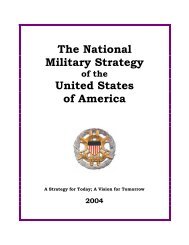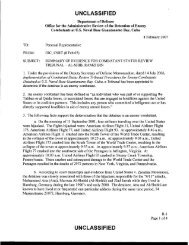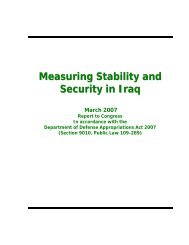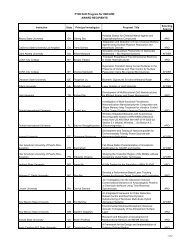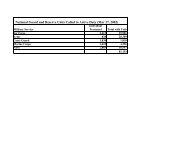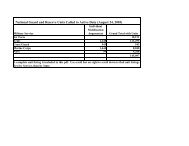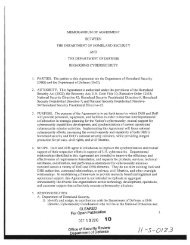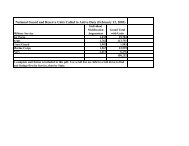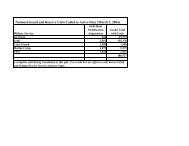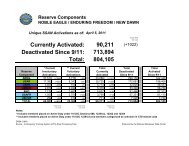Report - United States Department of Defense
Report - United States Department of Defense
Report - United States Department of Defense
Create successful ePaper yourself
Turn your PDF publications into a flip-book with our unique Google optimized e-Paper software.
UNCLASSIFIED<br />
Several coalition members pledged additional military support during the reporting period.<br />
Albania and Ukraine pledged forces to fulfill enabling functions such as force protection,<br />
counterintelligence (CI) and medical support. Lithuania, Germany and Slovakia pledged to<br />
provide additional special operations troops, and TCNs pledged a total <strong>of</strong> 26 new SFATs. Over<br />
the past six months, Georgia increased its overall troop contribution to ISAF from about 800 to<br />
about 1,500 personnel, making it the largest non-NATO troop contributor.<br />
Twelve PRTs have handed over their responsibilities to the Afghan Government. The 21<br />
remaining PRTs will be phased out and closed by the end <strong>of</strong> 2014.<br />
Caveats<br />
All ISAF coalition partners in Afghanistan operate according to the ISAF Rules <strong>of</strong> Engagement.<br />
Individual coalition partners invoke national caveats to ensure their forces operate in accordance<br />
with respective national laws and policies. Although some Allies and partners have reduced<br />
these caveats, some maintain national caveats that continue to constrain ISAF operations by<br />
limiting the types <strong>of</strong> missions a given country’s forces are authorized to undertake. Senior U.S.<br />
leadership consistently emphasizes the need to reduce national caveats.<br />
1.5: SECURITY OVERVIEW<br />
A Note on Metrics<br />
Previous editions <strong>of</strong> this report and much <strong>of</strong> ISAF’s public reporting on Afghanistan have relied<br />
on enemy-initiated attacks (EIAs) as the primary metric for progress in the war in Afghanistan.<br />
This report will, however, no longer be using EIA totals and historical comparisons <strong>of</strong> these<br />
totals as a primary metric <strong>of</strong> success in Afghanistan due to changing conditions on the ground,<br />
evolving force numbers and the shift from primarily ISAF-reported EIAs to primarily ANSFreported<br />
EIAs. Indeed, it is now clear that ISAF public reporting and media coverage <strong>of</strong> the war<br />
have relied too heavily on EIA reporting as a “scoreboard” for progress, something which the<br />
current version <strong>of</strong> this report is attempting to correct.<br />
As seen in figure 2, EIAs are now increasingly being reported by the ANSF while ISAF EIA<br />
reporting has declined in tandem with its force numbers. Although ANSF-reported EIAs are<br />
accurate, they provide far less detail in their reports than ISAF EIA reports, and there is a greater<br />
lag in collating ANSF-reported EIA data. This EIA data is still a useable metric and<br />
comparisons with previous years are still valid under certain circumstances, although the fidelity<br />
and depth <strong>of</strong> analyses and assessments based upon this data will be reduced.<br />
18



